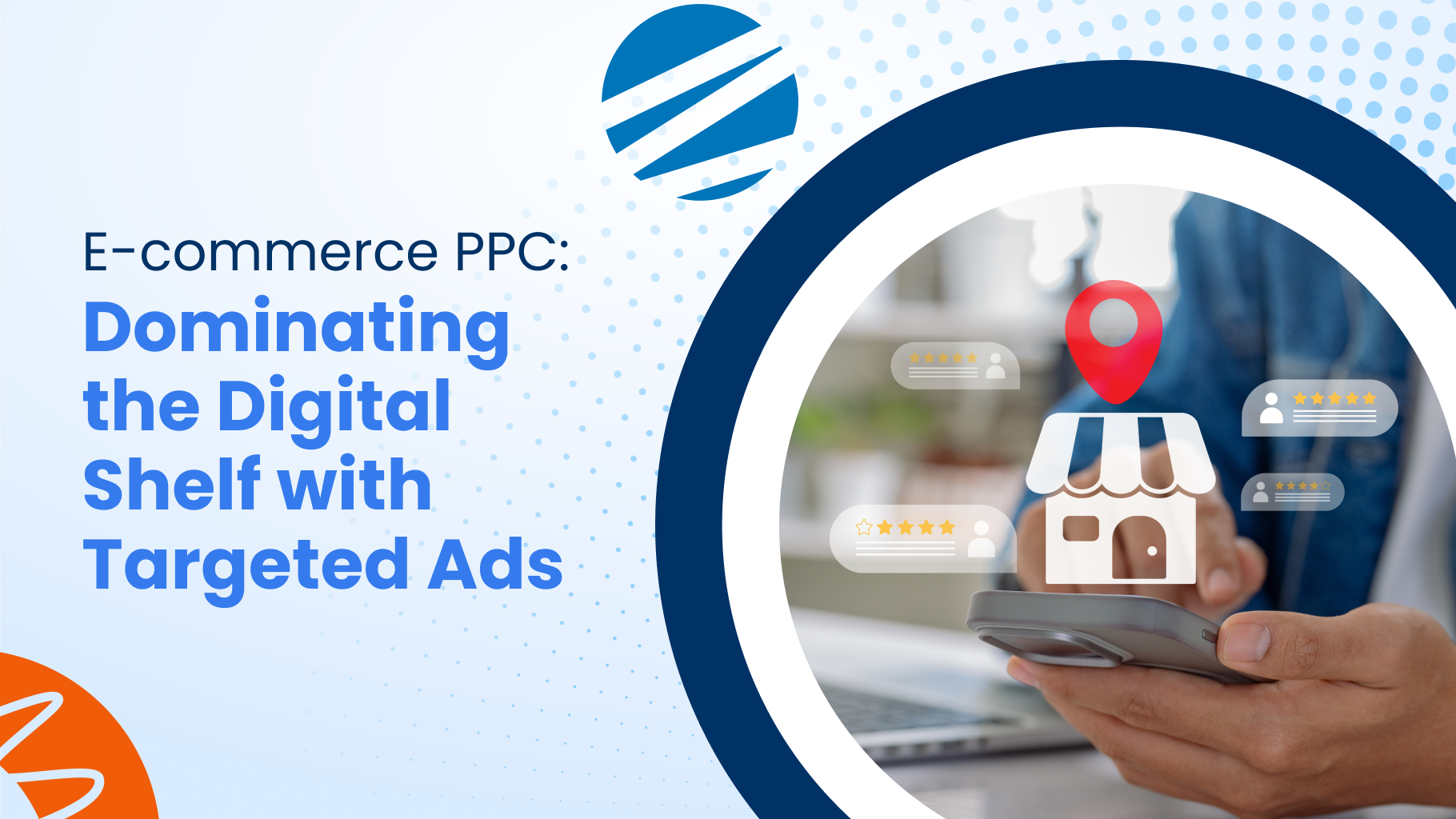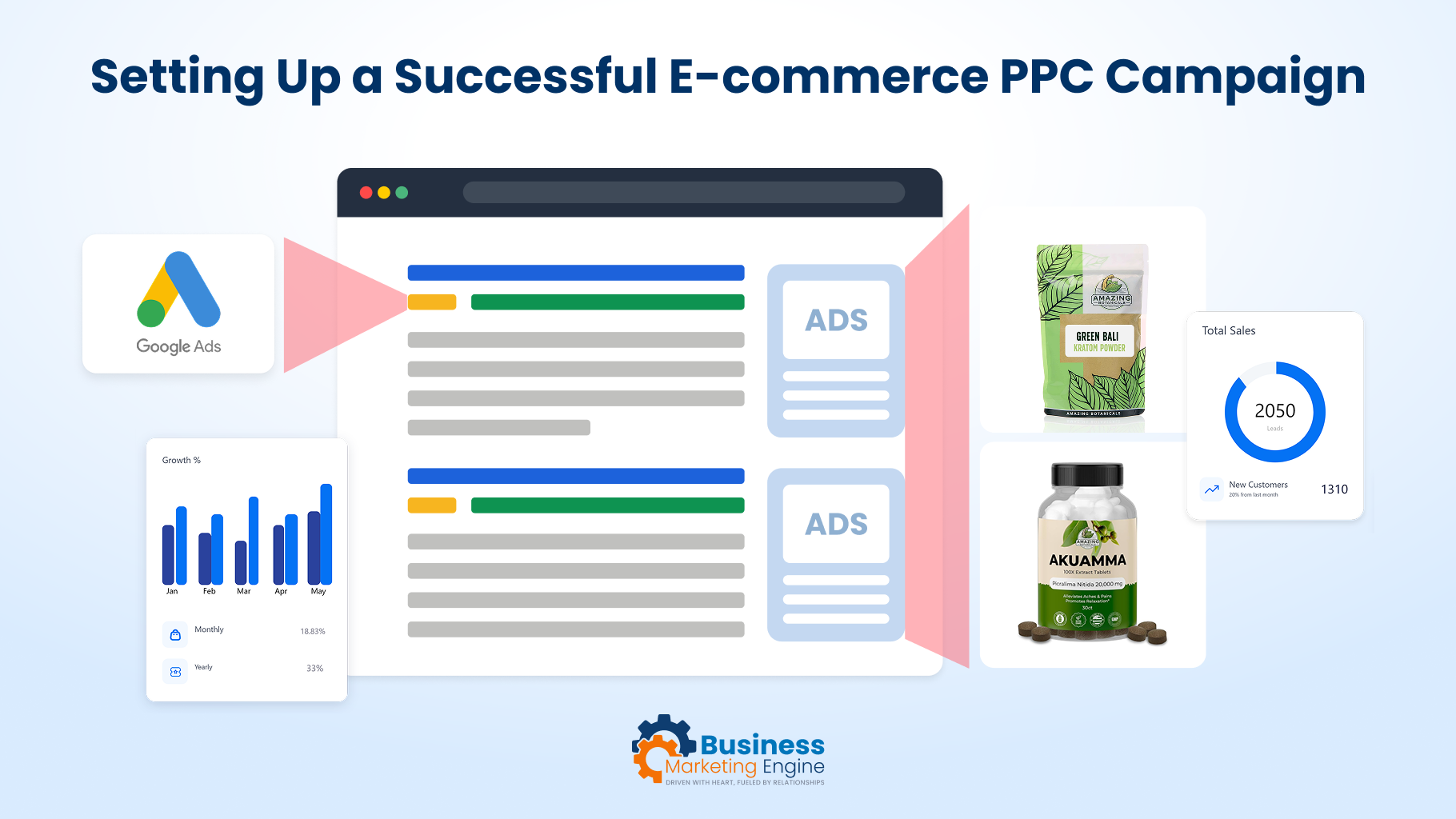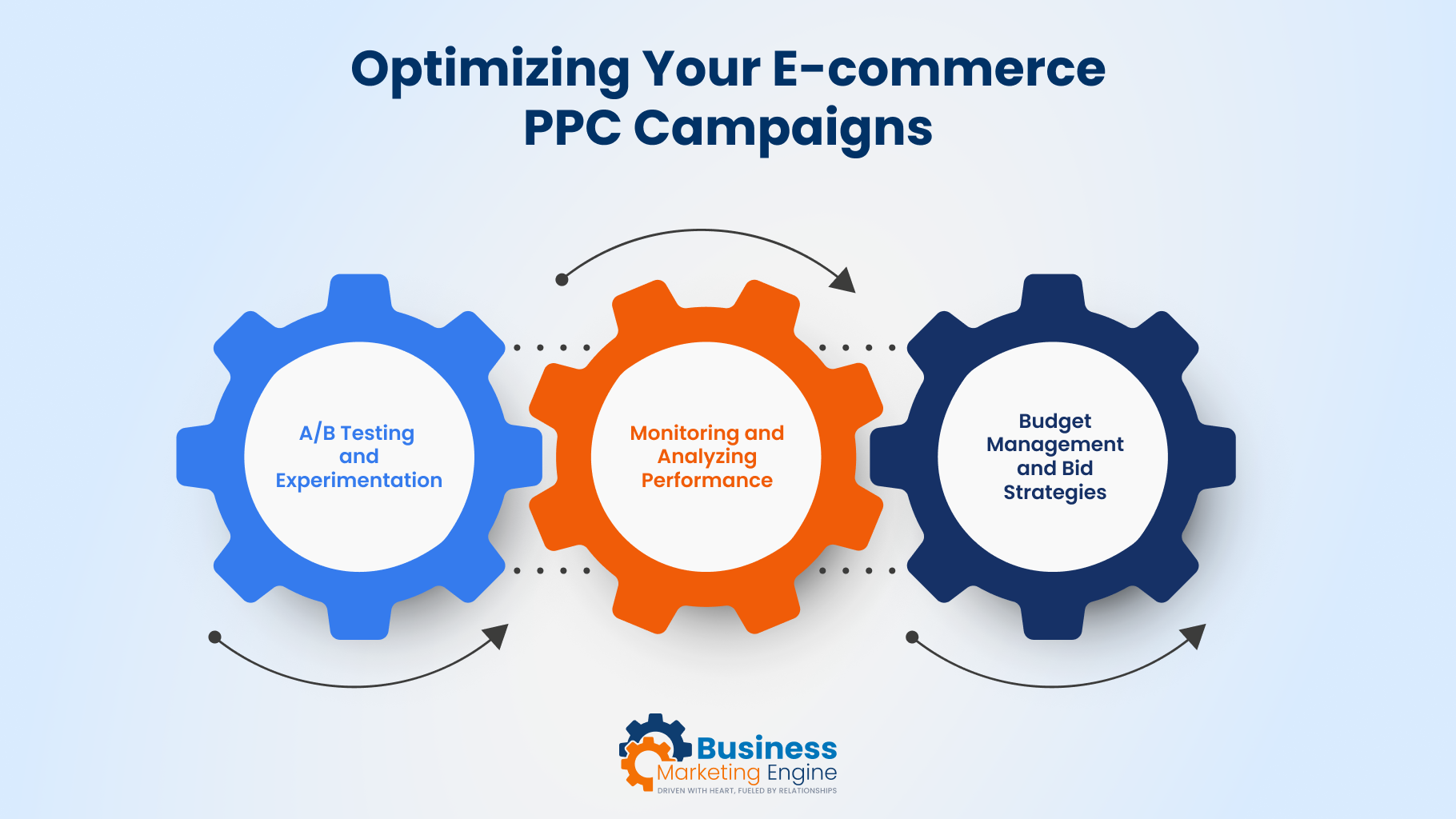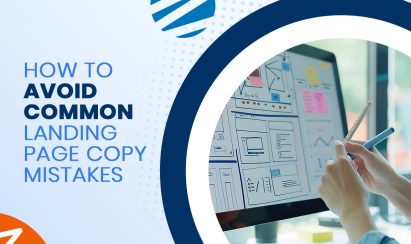In the competitive world of online retail, ecommerce PPC can be the game-changer that elevates your brand to the forefront. By employing the right strategies, businesses can precisely target consumers at the moment they are searching for products.
Pro Tip Alert: Prioritize visibility on search engines and product listing sites to increase your chances of engagement and sales.
PPC (Pay-Per-Click) advertising is essential for e-commerce businesses seeking visibility.
The concept of the “digital shelf” represents the top positions on search results pages and product listing sites, where products are most visible to consumers.
Curious about how to outshine competitors on the digital shelf with PPC?
This blog offers practical insights to empower e-commerce brands in leveraging PPC strategies and mastering the digital marketplace.
Why PPC Advertising Reigns Supreme for E-commerce
PPC advertising is a powerful tool that allows e-commerce businesses to gain instant visibility. Unlike organic strategies that take time to build, PPC delivers results immediately. By targeting specific keywords, you can ensure your products appear exactly when consumers are ready to buy, giving you a competitive edge.
Here’s why PPC advertising makes that possible.
Strategic PPC campaigns place your products in front of potential customers at the perfect moment. By using tailored ads, businesses can capture search traffic from high-intent shoppers, increasing the likelihood of clicks and conversions. For e-commerce businesses, this precise targeting helps ensure a higher return on investment (ROI).
Don’t Miss This Golden Nugget!: Use tools like Google Keyword Planner or SEMrush to find high-intent keywords that align with your target audience’s search behavior.
Understanding the Digital Shelf in E-commerce
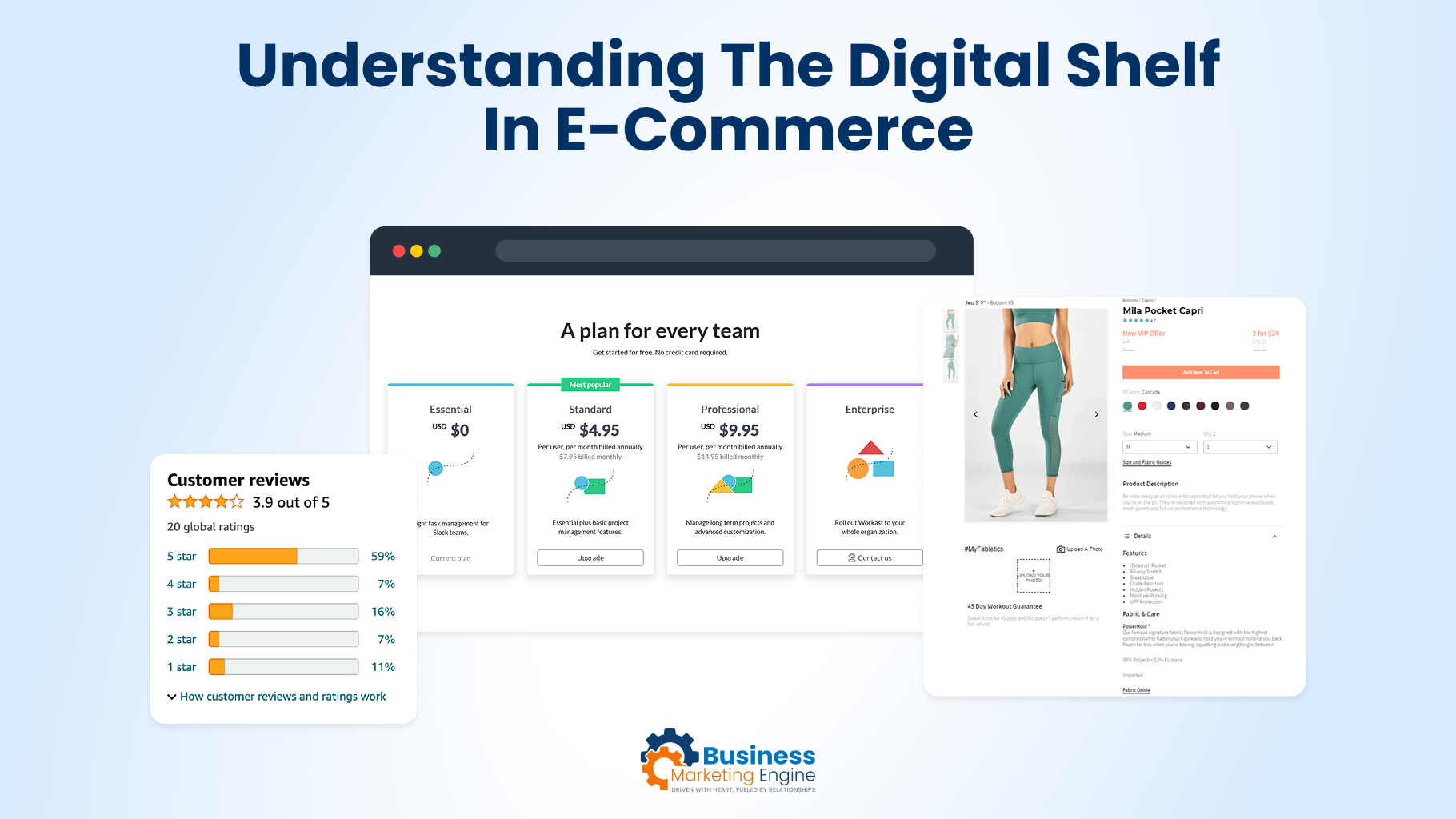
What is the Digital Shelf?
The digital shelf is the online space where e-commerce products are displayed and discovered by consumers. It includes everything from search engine results to product listings on major retail platforms. For online retailers, being visible on this digital shelf is crucial, as it greatly influences consumer purchasing decisions.
Your Shortcut to Success!: Align your landing page content with your ad copy, ensure mobile-friendliness, and prioritize a seamless user experience.
In e-commerce, having strong digital shelf presence means that your products are seen, rated well, and favorably positioned compared to competitors. Higher visibility increases the chances of engagement and sales, making it a critical focus for e-commerce brands.
Have you faced challenges in improving your product’s visibility on the digital shelf? Discover key insights by reading further.
Key Components of the Digital Shelf
- Product Listings and Descriptions: Accurate and detailed descriptions help customers make informed decisions and improve search visibility.
- Customer Reviews and Ratings: Positive reviews build trust and influence buying decisions, enhancing the perceived value of your products.
- Visual Content (Images and Videos): High-quality visuals capture attention and showcase product features, encouraging consumers to click and learn more.
- Pricing and Promotions: Competitive pricing and special offers drive conversions, helping your products stand out on the digital shelf.
Setting Up a Successful E-commerce PPC Campaign
Creating a successful e-commerce PPC campaign requires thoughtful planning and execution.
Maximize your visibility, minimize your effort to set yourself up for success: Keep reading to get started!
1. Keyword Research for E-commerce
Effective keyword research is the foundation of any ecommerce PPC strategy. By identifying high-intent keywords, you can target terms that consumers use when they’re ready to make a purchase. Tools like Google Keyword Planner and SEMrush are valuable resources for finding relevant keywords that boost visibility.
Using a mix of short-tail and long-tail keywords ensures broad coverage. Long-tail keywords, while less popular, often lead to higher conversions as they reflect specific purchase intentions. Balancing these keyword types helps maximize reach and relevance.
2. Crafting Compelling Ad Copy
Your ad copy plays a significant role in attracting clicks. Focus on your product’s unique selling points (USPs) and use persuasive language that appeals to emotions. Including strong call-to-actions (CTAs) such as “Buy Now” or “Shop Today” encourages potential customers to take immediate action.
Highlighting discounts, free shipping, or other benefits in your copy can also boost click-through rates (CTR). Make sure your ad stands out by focusing on what makes your brand unique.
3. Designing Effective Landing Pages
A well-designed landing page is essential for turning clicks into conversions. Ensure your landing page aligns with the ad content, as consistency builds trust and leads to better results. Additionally, prioritize user experience (UX) by creating a mobile-friendly design and an intuitive layout.
Organize product information clearly, and include high-quality images or videos. Simple navigation and fast loading times enhance the overall user experience, keeping shoppers engaged and increasing your conversion rate.
Optimizing Your E-commerce PPC Campaigns
To maximize your campaign’s success, continuous optimization is key. Here are ways to fine-tune your e-commerce PPC:
Insider Hack You Need to Know!: Experiment with different headlines, images, and CTAs to determine what resonates most with your audience.
A/B Testing and Experimentation
A/B testing allows you to experiment with different elements of your ads to find the best-performing versions. Test various headlines, images, CTAs, and ad copy to identify what resonates with your audience. Regularly analyzing test results helps you refine your approach and achieve better performance.
Monitoring and Analyzing Performance
Tracking key performance indicators (KPIs) like click-through rates, conversion rates, and cost per acquisition (CPA) is essential in ecommerce PPC management. Platforms like Google Analytics provide detailed insights, helping you understand your campaign’s impact. Regular performance reviews and data analysis allow you to adjust strategies based on real-time results.
Budget Management and Bid Strategies
Effectively managing your budget is crucial for getting the highest ROI from your PPC efforts. Implementing automated bidding strategies such as target CPA or target ROAS can help achieve optimal performance. Adjusting bids based on past data ensures that you’re investing where it matters most.
Conclusion
Applying these strategies can transform your e-commerce PPC efforts and establish a strong presence on the digital shelf. Start optimizing your e-commerce PPC campaigns today to see better engagement, visibility, and conversions. By consistently refining your approach, your business can achieve lasting success in the online marketplace.
Here’s the final Scoop!: Regularly review and adjust your campaigns based on performance data to ensure consistent results.
